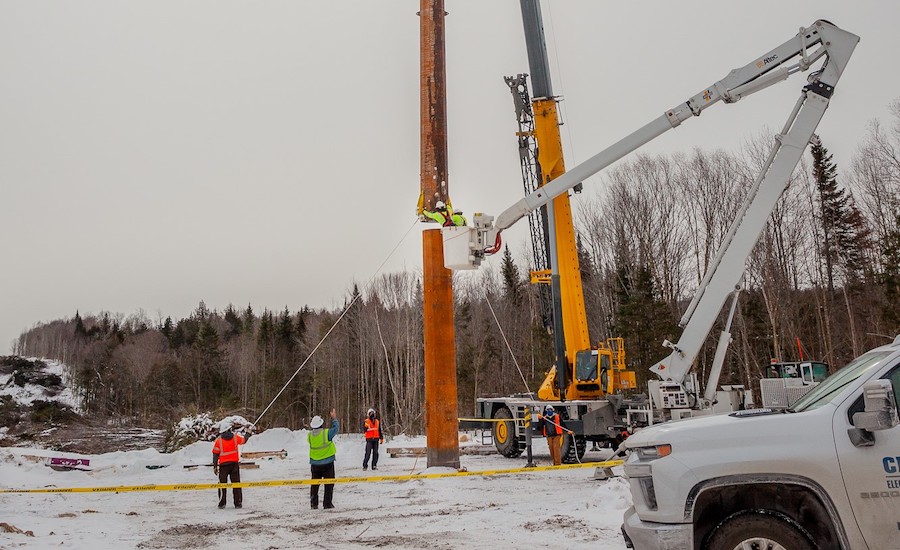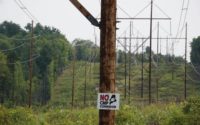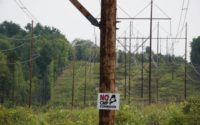Pole installation got underway on Feb. 8 for part of the $1 billion Central Maine Power hydroelectric transmission corridor project in a widened portion of the existing corridor, while construction is on hold in a remote region of western Maine due to a delay in a federal appeals court case.
The 145-mile transmission link, called the Northeast Clean Energy Connect (NECEC), will be built on land owned or controlled by Central Maine Power, which says that the project will make energy, environmental and economic improvements.
But three environmental groups—the Appalachian Mountain Club, Natural Resources Council of Maine and Sierra Club of Maine—are pushing for an injunction to delay the project while they sue the U.S. Army Corps of Engineers for more stringent environmental review.
Workers have installed the first of 829 steel poles that will be installed with about 385 workers currently working on the project, of which 275 are Maine rsidents, according to a spokesman for Avangrid, the Spanish parent company of Central Maine Power.
In addition to widening the existing corridor to set poles and string new transmission lines, Cianbro Corp. and Irby Construction will begin site development work this winter for a custom-built, $250 million converter station in Lewiston that will convert direct current into alternating current to feed into the electric grid, an Avangrid spokesman says.
The work comes nearly a month after Avangrid received a Presidential permit from the U.S. Dept. of Energy for the project, completing its permitting, and announced the start of construction at The Forks, where the Kennebec and Dead rivers converge in Somerset County.
It also received permits from the Corps, Maine Dept. of Environmental Protection, Maine Land Use Planning Commission and Maine Public Utilities Commission.
“Prior to the poles going up, roads were plowed and mats were laid so vehicles could travel over the terrain without damaging the environment,” said a spokesman for NECEC. “The project has received every regulatory permit by the state needed to begin construction and is honoring the injunction on construction in section one of the project until the Circuit Court makes its ruling.”
Thorn Dickinson, NECEC president and CEO, said, “This project has always promised to provide a boost to Maine’s economy, and we are already seeing those benefits take shape.”
Tim Burgess, electrical workers' union Local 104 assistant business manager noted new jobs "during the COVID crisis when they are most urgently needed.”
But Sandi Howard of No CMO Corridor, a grassroots non-profit organization and leading opponent of the project, says it now has delivered more than 100,000 signed petitions from Maine residents to Secretary of State Shenna Bellows to have a project referendum placed on state ballots on Novemberf, according to a Jan. 21 statement.
The ballot measure would seek voter approval of an “act to require legislative approval of certain transmission lines, require legislative approval of certain transmission lines and facilities and other projects on public reserve lands and prohibit the construction of certain transmission lines in the Upper Kennebec Region," the statement says.
If enacted, the law will be retroactive and effectively block the project.
Construction on the NECEC project is expected to finish by the second quarter of 2023. It will deliver 1,200 MW of Canadian renewable hydropower to the New England energy grid in Lewiston, Maine with costs paid by Massachusetts ratepayers.
The 53-miles of new corridor on working forest land will rely on a new clearing method of tapered vegetation, according to Avangrid. The remaining two-thirds of the project will follow existing industrial power lines. Construction is scheduled for completion and the line expected to be in service by the second quarter of 2023.
A decision in the U.S. appellate court is expected in a few weeks, according to an Avangrid spokesman.






Post a comment to this article
Report Abusive Comment